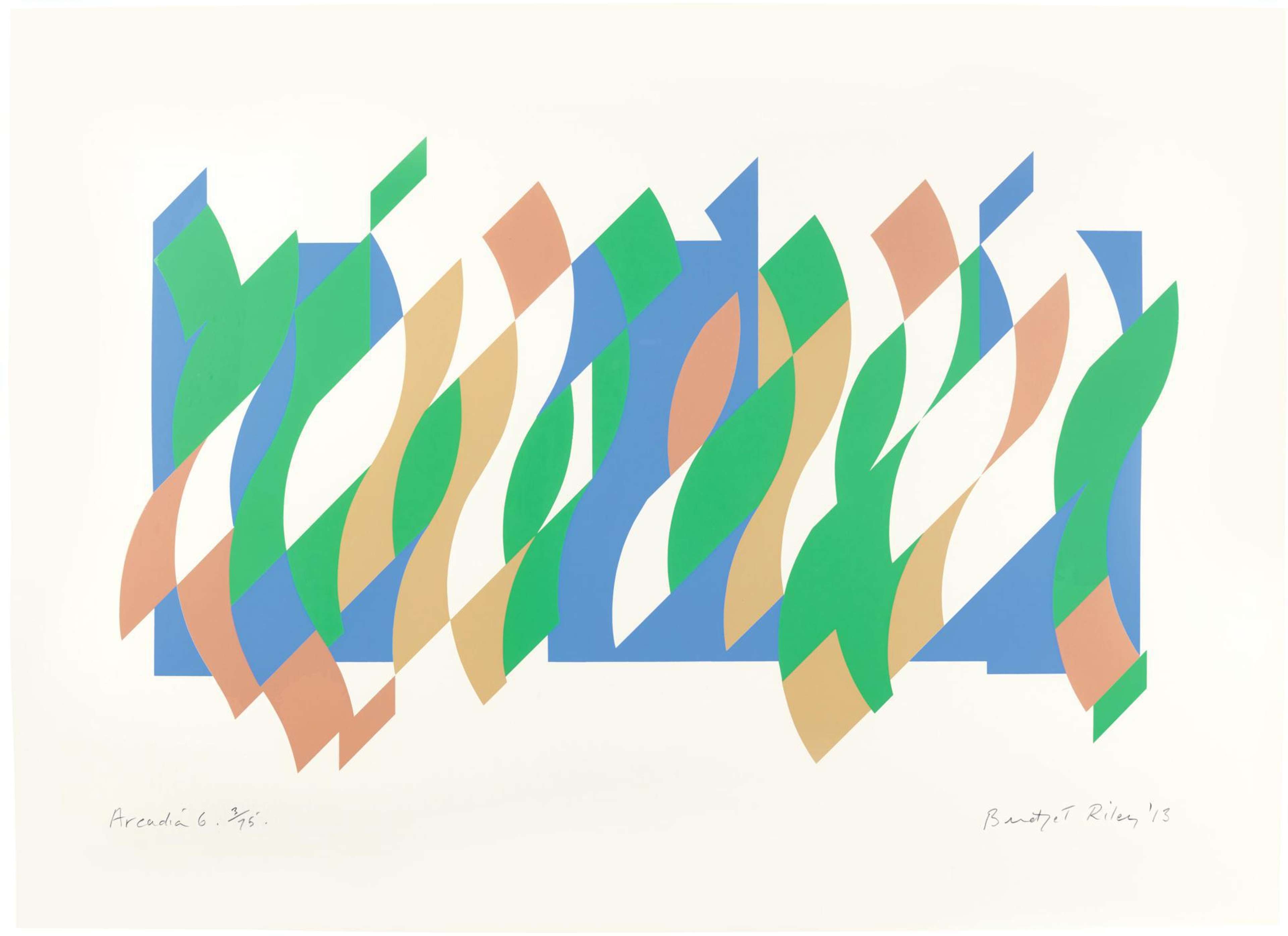
Arcadia 6

Arcadia 6
Signed Print
Bridget Riley
£7,000-£10,500
$14,000-$21,000 Value Indicator
$13,000-$19,000 Value Indicator
¥70,000-¥100,000 Value Indicator
€8,000-€12,000 Value Indicator
$70,000-$110,000 Value Indicator
¥1,450,000-¥2,180,000 Value Indicator
$9,500-$14,000 Value Indicator
There aren't enough data points on this work for a comprehensive result. Please speak to a specialist by making an enquiry.
65 x 89cm, Edition of 75, Screenprint
Auction Results

Track auction value trend
Meaning & Analysis
Arcadia 6 is a signed screen print produced by Op artist Bridget Riley in 2013. In this print, Riley depicts an abstract composition of geometric shapes rendered in bright and vibrant colours. Blue, green and orange dominate the composition and the colours stand out against the plain backdrop. The print captures Riley’s fascination with colour and the way in which particular arrangements of colours can be employed to evoke a sense of movement.
The print is part of the Arcadia collection which Riley produced later on in her artistic career. The collection resonates with other collections made by the artist, notably the Lozenges collection. Both these collections experiment with compositions of curved, interlocking shapes and planes of colour.
Riley’s artistic style was heavily influenced by the time the artist spent living in Cornwall during her youth. Riley moved from London to Cornwall during World War II and explains how she was mesmerised by the ever-changing Cornish skies and seas. This visual stimulation is something that Riley tries to reproduce in her own artworks. The artist also attempts to mimic natural movements, such as rolling waves and gusts of winds in her artworks, employing techniques inspired by artists such as Georges Seurat and Henri Matisse.